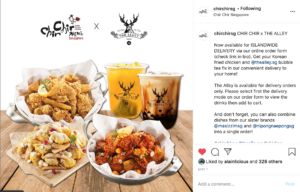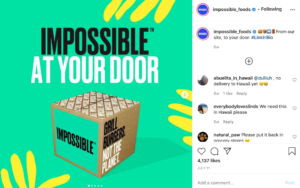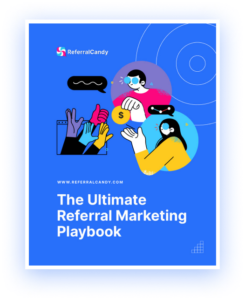In recent years, restaurants realised that customers would love to have quality meals right in their own homes, resulting in an increasing number of brick-and-mortar stores joining food delivery platforms. However, in 2020, Miss Rona (a.k.a COVID-19) burst onto the scene and disrupted the F&B scene as we know it.
Restaurants were shut down and forcibly pushed onto delivery platforms with this being their only source of income for many months. As a result, food delivery platforms experienced a bum-rush from many restaurateurs desperate to keep their businesses afloat.
If you’re fresh on the scene and wondering how to get started with delivery platforms or if you are a platform looking for merchant feedback, here are some insights. A survey conducted by CandyBar with several merchants on their respective delivery platforms spoke of leveraging on the extensive databases of the sites to reach out to a larger target audience.
“Third-party delivery platforms give us higher visibility and reach as they have a ready customer base that enables us to reach as many people as possible,” says Ms Rachel Xie, PR & Communications Manager of K Food Holdings – the umbrella group that owns brands such as Chir Chir Fusion Chicken Factory, Masizzim, and Kogane Yama. However, with the large reach comes a caveat. She elaborates: “These apps also tend to be saturated with many other vendors and charge high commission rates. There is also less flexibility and efficiency in managing our own menu and product listings.“
Popular Delivery Platforms By Region (Non-Exhaustive)
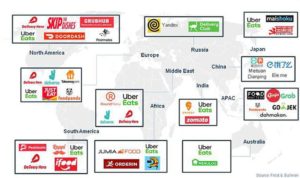
Image credit Forbes
Every country has their local platforms, but a few major players such as Deliveroo, Delivery Hero (parent company of Foodpanda, Foodora, etc), UberEats and Just Eat dominate the global market with the various brands in their stable while others concentrate on Southeast Asia – Gojek and Grab, and focusing on the Americas such as Postmates.
A Step-by-step Guide To Setting Up Your Delivery Service
Looking to get onto a platform? You may want to take a peek at our previous article discussing the pros and cons of each here. To help you along further, here are five key pointers to get you started on your food delivery journey.
1. Should I Choose A Delivery Service Or Do It Myself?
Joining a third party delivery service or platform does expose your brand to a larger audience as it leverages on its extensive database and delivery logistics. However, with that also comes commission fees from using the platform which can vary from 10% to 30%.
A representative from Tie Fun Wan, a fusion restaurant says: “In Singapore, GrabFood and FoodPanda are pretty big. Order wise they do bring in quite a lot of deliveries and the platform takes care of the ordering and delivery process, we just need to prepare them accordingly. However, the high commission…is something that needs improvement.”
It is quite difficult for a restaurant to undertake the whole delivery service in-house as it requires an entire logistics team and a high cost to maintain a fleet of riders specifically for one brand. But, undertaking the delivery service yourself is possible with self-managed order forms via services such as Oddle or Take.sg that can give you brand autonomy. But be aware that you would need to set aside a higher marketing budget to promote your delivery menu on a lesser-known platform.
Ms Teo Meijun, Marketing and Communications Executive from Timbre X uses order solution Getz aside from Grabfood for the group’s delivery services. She says: “Getz provides island-wide delivery and an all-rounded online ordering solution and the system allows the merchant full access to the backend dashboard. It also provides us with the ability to track delivery rider location and provide real-time updates to the customer, and there is also prompt service support via the messaging app. The system is also fronted by Timbre X which helps with brand equity.”
2. What Do I Need For Successful Delivery?
With travel time needed to be taken into consideration, there are a few things you have to think about when menu planning. Before you decide to upload your entire menu onto the platform, have you thought through the following?
Prep and cooking time – Can your operations team handle making every dish from scratch during crunchtime without compromising on quality? Opting for items that already have their mise en place completed in advance might be easier on the kitchen for delivery orders.
Does it travel well? – Would the item arrive presentably and safely to the customer? It needs to look as good as the dine-in quality and be safe to consume upon delivery. For example, delivering sashimi may not be the best idea.

Packaging – With single-use plastics being frowned upon, you may want to opt for biodegradable packaging and cutlery instead. Depending on your cuisine, would a rectangle lunchbox suit or would you need bowls instead? Would there be any spillages during delivery with this packaging? Remember, the end result needs to reach the customer in an appetising condition.
3. Do I Need Photos For My Online Delivery?
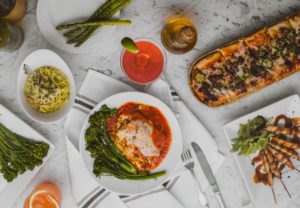
Ideally yes! It is called foodporn for a reason. Usually, delivery platforms may throw in professional photography for your menu as part of their services – however, the cost of cooking the entire menu just for pictures may be off-putting to many small businesses.
A good middle-ground would be to take photos of signature items that look impressive to the customer and use those as a benchmark for the menu items offered. Not every dish needs a photo – i.e. a side salad – a few good pictures can go a long way, both on your delivery platform and for future use on social media.
You may want to look into hiring a food stylist/photographer – but if that is out of your budget. It would help to refer to a few professional photo samples and read up on food photography tips before embarking on it yourself.
4. How Do I Set Myself Apart From Competitors?
Aside from selling your signature items, looking out for interesting collaborations for exclusive deals can help set your offerings apart from competitors. For example, Chir Chir Fusion Chicken Factory partnered up with bubble tea brand The Alley to offer boba and fried chicken to their delivery customers, while in the USA – Impossible Foods tilted its plans by tying up with ordering solution Cheetah to bring its plant-based patties direct to homes.
5. Do I Need To Mark Up My Delivery Prices?
Depending on the choice of platform, the commission fees can vary greatly, this can also increase if you are a non-exclusive vendor (i.e. on multiple apps). A May 2020 report from NPR depicted The Kati Roll Company in New York City netting only US$7 for a US$12 order via a food delivery app due to the 17% commission on top of the delivery fee.
While keeping food costs and profitability in mind, it is imperative to factor in the platform fees. These costs will ultimately be passed on to the consumer, and if it is exorbitant – this will discourage customers from ordering from you. Some platforms offer a distance-based delivery charge instead of a flat-fee per delivery, and some vendors have shortened the radius for delivery to reduce these charges but that in turn also limits the number of orders received.
Aside from the usual food delivery platforms, ordering solutions such as GoPeople (AU), Oddle (SG), and Citysprint (UK) offer courier services for door-to-door food delivery. Usually, the surcharges of these ordering solutions are lower and ultimately helps the vendor save costs on commission.
How Can Delivery Platforms Improve?
CandyBar’s survey showed that vendors would like to have lower commission rates and more inclusive campaigns that will increase visibility for restaurateurs. In April 2020, CNA reported that the hard-hit F&B industry was struggling to reconcile the commission rates on delivery platforms – while some platforms did reduce their fees for a limited time, it has pushed many to source for alternate options.
K Food Holdings is one of them. Rachel says: “Aside from the platforms, we also have started managing our own deliveries as well using a web-app system developed by Beepit to save costs on commission.”
Whether they like it or not, small businesses and even fine dining restaurants have been dragged kicking and screaming into the 21st century by adapting their strategies and budgets to include delivery options. As most countries emerge from their total state of lockdown to allow dine-ins, deliveries would still form a larger percentage of businesses as compared to pre-COVID-19. This new normal has changed the way restaurants operate and there is no better time than now to take your business online.


